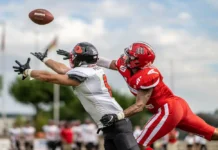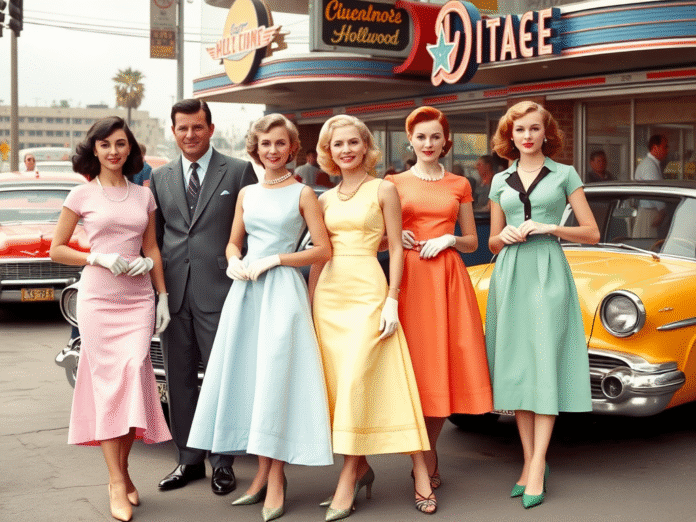Table of Contents
Introduction
The 1950s fashion era brought a blend of elegance, structure, and personal style. Christian Dior’s “New Look” reshaped women’s wear with curvy, tailored silhouettes. Stars like Marilyn Monroe (1926, USA) and Audrey Hepburn (1929, Belgium) influenced feminine trends with glamour and simplicity. For men, icons like James Dean (1931–1955) and Marlon Brando (1924–2004) introduced a rugged, relaxed look.
Standard fabrics included cotton, wool, and rayon, with patterns like polka dots and plaid. From polished accessories to teen rebellion and music influence, 1950s fashion left a bold mark. Its timeless appeal continues to shape modern vintage-inspired trends across the world.
| Basics | Summary |
| Women’s Style | Hourglass shape with flared skirts. |
| Dior’s Look | Curvy, structured silhouettes. |
| Fabrics (Women) | Cotton, silk, rayon. |
| Fabrics (Men) | Wool, flannel, tweed. |
| Prints | Florals, gingham, plaid, polka dots. |
| Women’s Accessories | Pearls, gloves, clutch bags. |
| Men’s Accessories | Fedoras, ties, watches. |
| Women’s Shoes | High heels. |
| Men’s Shoes | Loafers, leather shoes. |
| Men’s Suits | Padded shoulders, wide lapels. |
| Casual Men’s Wear | Cardigans, vests, short sleeves. |
| Female Icons | Monroe and Hepburn. |
| Male Icons | Dean and Brando. |
| Teen Trends | Leather jackets, jeans, poodle skirts. |
| Family Outfits | Simple, clean, functional. |
| Lasting Influence | Still shapes modern vintage fashion. |
Women’s Fashion Trends
Women’s fashion in the 1950s fashion highlighted the hourglass silhouette. Dresses with fitted bodices and flared skirts dominated the scene. High heels, gloves, and pearls completed the polished look. The “New Look” by Dior became iconic, celebrating curves and structured tailoring. Soft pastels, florals, and polka dots were typical. The style emphasized charm and femininity, and the 1950 fashion trends for women still influence vintage and retro-inspired wardrobes today.
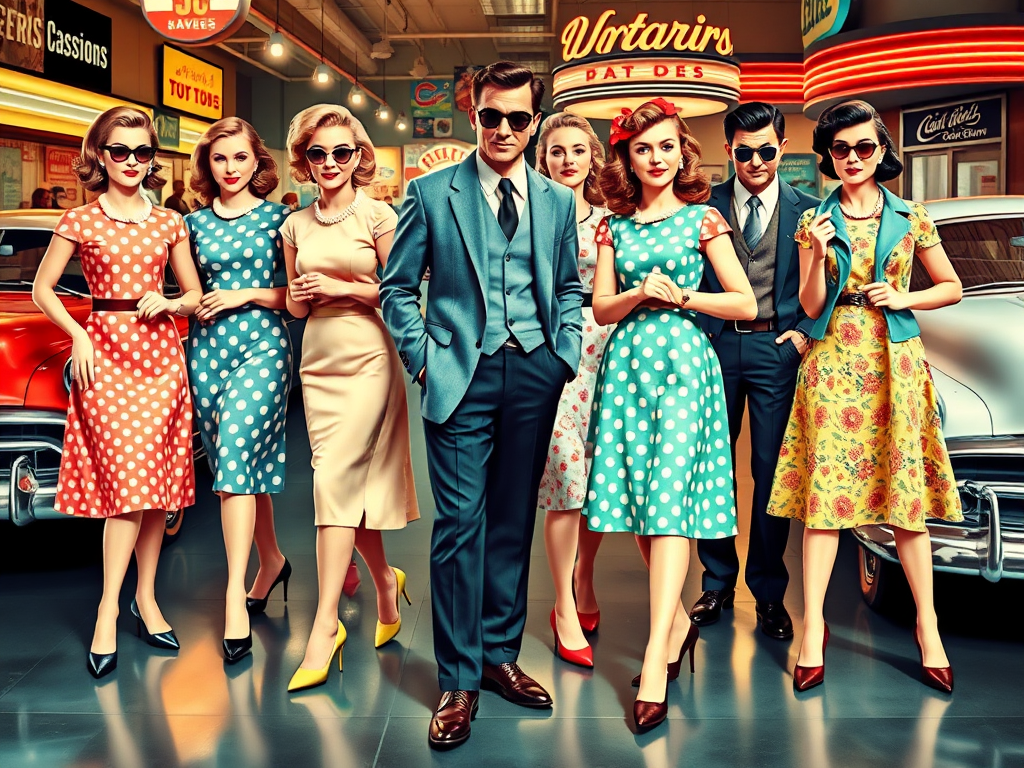
Key Elements of Men’s 1950 Fashion
Men’s style in 1950 fashion focused on clean lines, masculinity, and timeless design. Popular features included:
- Structured suits with wide lapels and padded shoulders
- High-waisted trousers, often pleated or cuffed
- Casual wear like short-sleeved shirts, cardigans, and vests
- Leather shoes and loafers for polished appearances
- Accessories such as fedoras and tie clips to finish the look
- This era helped define classic men’s style for decades to come.
Hollywood’s Impact on 1950 Fashion
Female Icons Set the Trend
Hollywood actresses like Audrey Hepburn and Marilyn Monroe heavily influenced 1950s fashion for women. Their on-screen wardrobes and public appearances became trend blueprints. Hepburn’s minimalist style and Monroe’s glamorous curves showed different sides of femininity. These icons shaped how women dressed, combining elegance with personality, and made fashion feel both attainable and aspirational for audiences around the world.
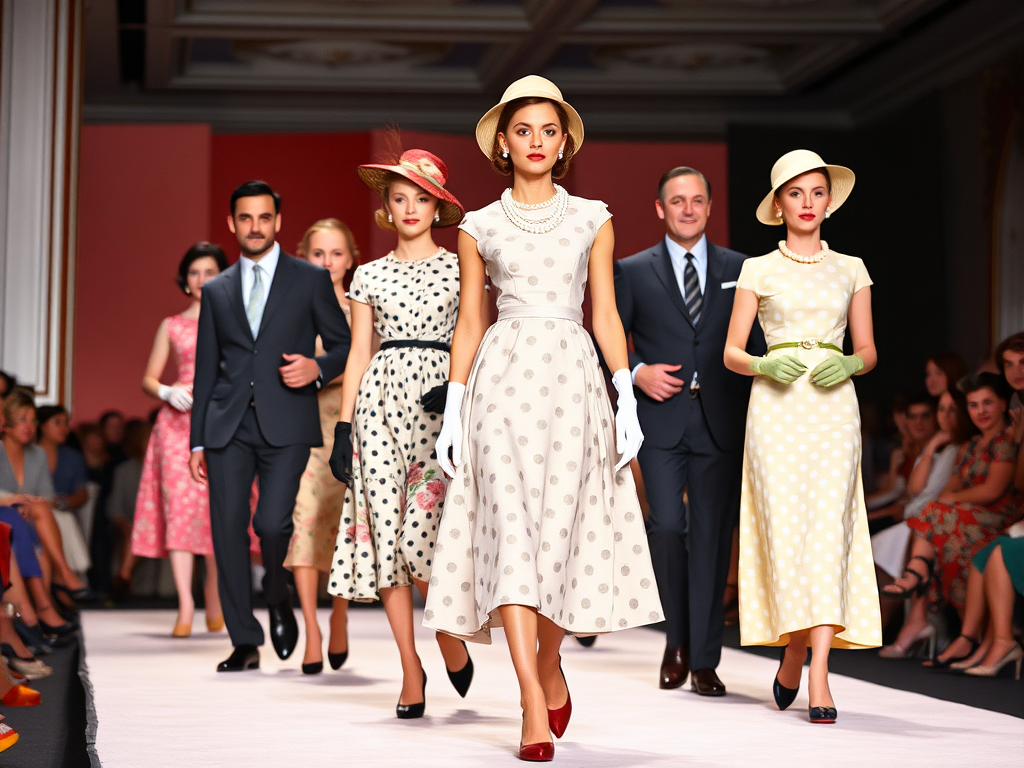
Male Stars and Signature Styles
Actors like James Dean and Marlon Brando brought casual rebellion to men’s fashion. Dean’s jeans, white tees, and leather jackets became teenage staples, while Brando’s rugged look challenged traditional suiting. These film stars influenced the younger generation and shifted the narrative of 1950 fashion toward edgier, more relaxed styles, helping blend formal with casual in daily wear.
Fabrics and Patterns in Everyday Fashion
Fabrics in 1950 fashion were both practical and stylish. Women favored cotton, rayon, and silk for dresses and blouses, while men’s clothes often used wool, flannel, and tweed. Popular patterns included florals, gingham, polka dots, and plaid. These fabrics and prints helped define the mood of the decade—wholesome, lively, and optimistic.
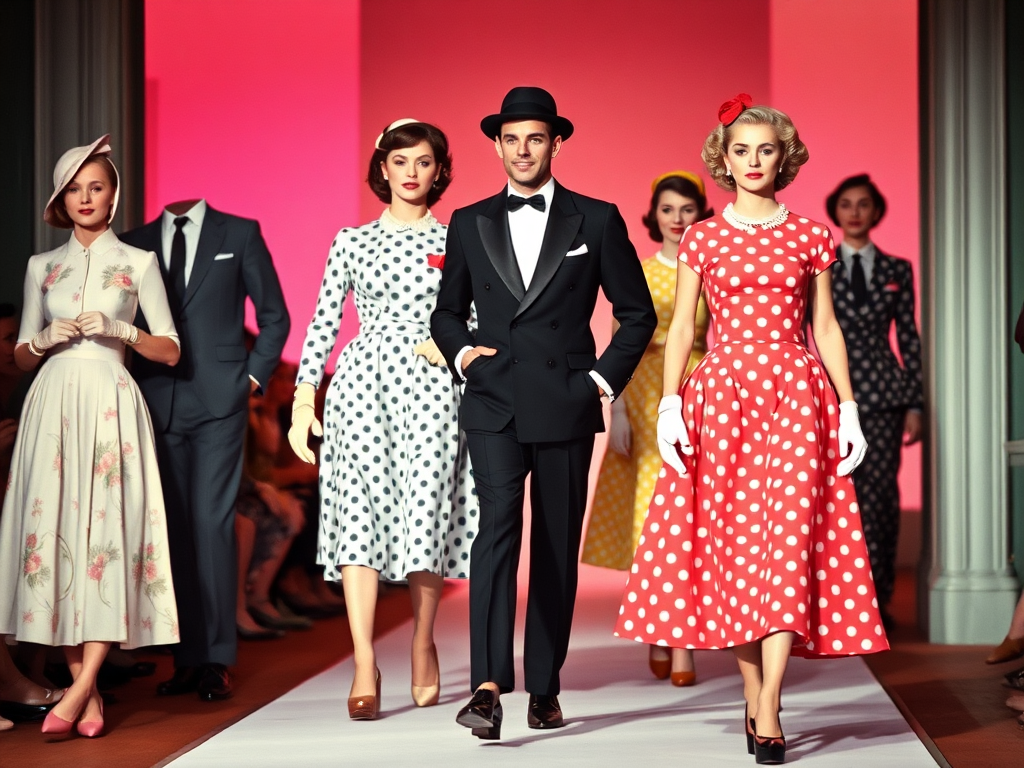
Signature Accessories of the 1950s Fashion
Women’s Must-Have Items
For women, accessories were essential in completing the 1950 fashion look. Popular items included pearl necklaces, elbow-length gloves, cat-eye sunglasses, and small clutch handbags. Hats with veils or wide brims were worn for both formality and flair. These accessories reflected elegance and added a touch of sophistication to even casual outfits.
Men’s Classic Finishing Touches
Men accessorized with fedora hats, pocket squares, leather belts, and wristwatches. Slim ties and polished dress shoes were key elements in formal wear. Even casual looks included a neat touch, like suspenders or a crisp handkerchief. These finishing details elevated men’s fashion and emphasized a sense of polish and pride in appearance.
Teen Fashion and Music Influence
Rock ’n’ Roll Changes the Rules
Teenagers in the 1950s broke away from traditional adult fashion norms. Inspired by rock stars like Elvis Presley, they wore leather jackets, cuffed jeans, saddle shoes, and poodle skirts. Youth culture began to shape its own identity through fashion. The 1950s fashion for teens introduced energy and rebellion, blending music and style. This shift influenced not only the decade but also fashion movements for years to come.
Dance-Ready Styles Emerge
With the rise of sock hops and rock music, dance-friendly outfits became popular. Girls wore full circle skirts that twirled while dancing, paired with short-sleeve blouses. Boys sported rolled-up jeans, sneakers, and slick hairstyles. These expressive looks created a new genre of 1950 fashion, one rooted in rhythm, youth, and freedom.

The Timeless Legacy of 1950 Fashion
The influence of 1950s fashion continues to resonate in modern style. Designers still borrow silhouettes like the cinched waist and full skirt, while retro prints make seasonal comebacks. Men’s vintage-inspired suiting and accessories remain popular on runways. The era’s focus on elegance, quality, and individuality ensures its lasting appeal. Whether in film, fashion collections, or everyday wear, the 1950s remind us of style’s power to uplift and transform.
Conclusion
1950s fashion continues to influence modern style with its timeless silhouettes, bold accessories, and cultural impact. From Dior’s elegant designs to the rebellious edge of teen trends, the decade blended tradition with innovation. Icons like Monroe, Hepburn, Dean, and Brando shaped a fashion legacy that still inspires designers and everyday wear. The era’s focus on individuality, charm, and quality ensures its lasting place in fashion history.
Want to know about “Doja Cat Outfits: A Deep Dive into Bold Creativity” Check out our “Fashion” category.
FAQs
Women’s fashion centered on the hourglass shape, featuring fitted waists, flared skirts, and elegant accessories that highlighted femininity and charm.
Audrey Hepburn and Marilyn Monroe shaped 1950s fashion with their contrasting styles—minimal elegance and glamorous curves—which became iconic and inspired global trends.
Men’s fashion focused on clean-cut tailoring, structured suits with wide lapels, and polished accessories that emphasized masculinity and timeless sophistication.











